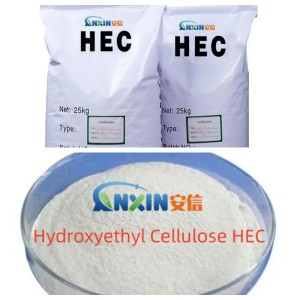Hydroxyethyl cellulose (HEC), a nonionic water-soluble polymer, plays a crucial role in modern waterborne coating systems. It not only possesses excellent thickening, dispersing, water-retention, and rheology control functions, but also significantly improves the hiding power and film-forming properties of coatings.
1.Structural and Functional Properties of HEC
HEC is a nonionic polymer modified from natural cellulose through ethylene oxidation. Its molecular chain contains a large number of hydroxyethyl substituents, giving it good hydrophilicity and solubility. The molecular structure of HEC can form a uniform and stable colloidal solution in water, significantly affecting the viscosity, flowability, and pigment/filler dispersion of the system. This characteristic provides a fundamental condition for improving the hiding power and film uniformity of coatings.
2. Mechanism of HEC Effect on Improving Hiding Power
2.1. Improving Pigment Dispersion
In waterborne coating systems, the degree of pigment dispersion directly affects the hiding power of the coating. HEC exhibits excellent dispersing and stabilizing properties. By increasing the viscosity of the system and forming an adsorption layer on the surface of pigment particles, it effectively prevents pigment flocculation and sedimentation, ensuring uniform pigment distribution within the film. This uniform distribution allows for more complete light scattering, thereby enhancing the hiding power of the coating.
2.2. Enhanced Rheological Properties
By rationally controlling the molecular weight and dosage of HEC, the pseudoplastic rheological behavior of the coating can be adjusted. During application, the coating exhibits a lower shear viscosity, facilitating leveling during brushing or spraying; after application, it returns to a high viscosity state, preventing pigment migration and sagging, thus forming a uniform and dense coating layer. This rheological stability further improves the persistence of hiding power.
2.3. Improved Pigment-Emulsion Compatibility
The nonionic nature of HEC makes it highly compatible with various types of emulsions (such as acrylic and vinyl acetate emulsions), improving the wetting and adhesion between pigment particles and the binder interface. Through this process, pigments are better distributed within the emulsion matrix, reducing transparent areas caused by pigment agglomeration in the coating film, thereby improving hiding power.
3. Mechanism of HEC Improvement of Film-Forming Properties
3.1. Controlling Moisture Evaporation Rate
During the coating drying process, excessively rapid moisture evaporation can lead to uneven film formation or pinholes. HEC possesses excellent water retention properties, enabling a uniform moisture release mechanism during the drying stage. This allows sufficient time for emulsion particles to flow and fuse, resulting in a dense, smooth, and continuous film. This uniform film formation not only improves the appearance and gloss but also enhances hiding power and durability.
3.2. Improving Coating Uniformity and Density
During film formation, HEC molecular chains can form hydrogen bonds or physical entanglements with emulsion particles, resulting in a more compact coating structure. Its lubricating and leveling effects reduce surface defects, improve the smoothness and density of the coating film, thereby enhancing the uniformity of reflected light and the hiding power.
3.3. Enhancing Coating Mechanical Properties
Appropriate amounts of HEC can form a flexible skeleton in the coating film, mitigating cracking caused by stress concentration after drying. Enhanced film integrity and toughness result in a smoother, more continuous coating, providing physical support for subsequent pigment hiding power and coating aesthetics.
4. Optimization Recommendations for HEC in Coating Applications
4.1. Selecting the Appropriate Viscosity Grade
High-viscosity HEC is suitable for high-hiding-power coatings, providing good suspension and thixotropy; while medium- and low-viscosity HEC is more suitable for spray-applied systems or systems requiring high leveling. The appropriate grade should be selected based on the application method and coating type.
4.2. Controlling the Dosage and Dissolution Process
The general addition amount is 0.3%–1.0% of the total formulation. HEC should be dissolved slowly after thorough dispersion to avoid clumping. Excessive use can lead to decreased leveling properties or film blooming, affecting the final hiding power.
4.3. Synergistic Use with Other Additives
HEC, when used synergistically with dispersants, wetting agents, and film-forming aids, can further optimize pigment dispersion, leveling, and film formation processes. For example, when combined with film-forming aids such as propylene glycol and Texanol, it can significantly improve film density and gloss.
The application of HEC in waterborne coatings not only plays a basic role in thickening, water retention, and rheology regulation, but also has a significant effect on improving the hiding power and film-forming properties of coatings. By improving pigment dispersion, adjusting coating rheology, controlling drying rate, and enhancing film density, HEC helps achieve coating effects with high hiding power, high smoothness, and excellent durability. In the future, with the development of green and environmentally friendly waterborne coatings, the molecular structure design and application optimization of HEC will become an important direction for improving the overall performance of coatings.
Post time: Nov-04-2025








